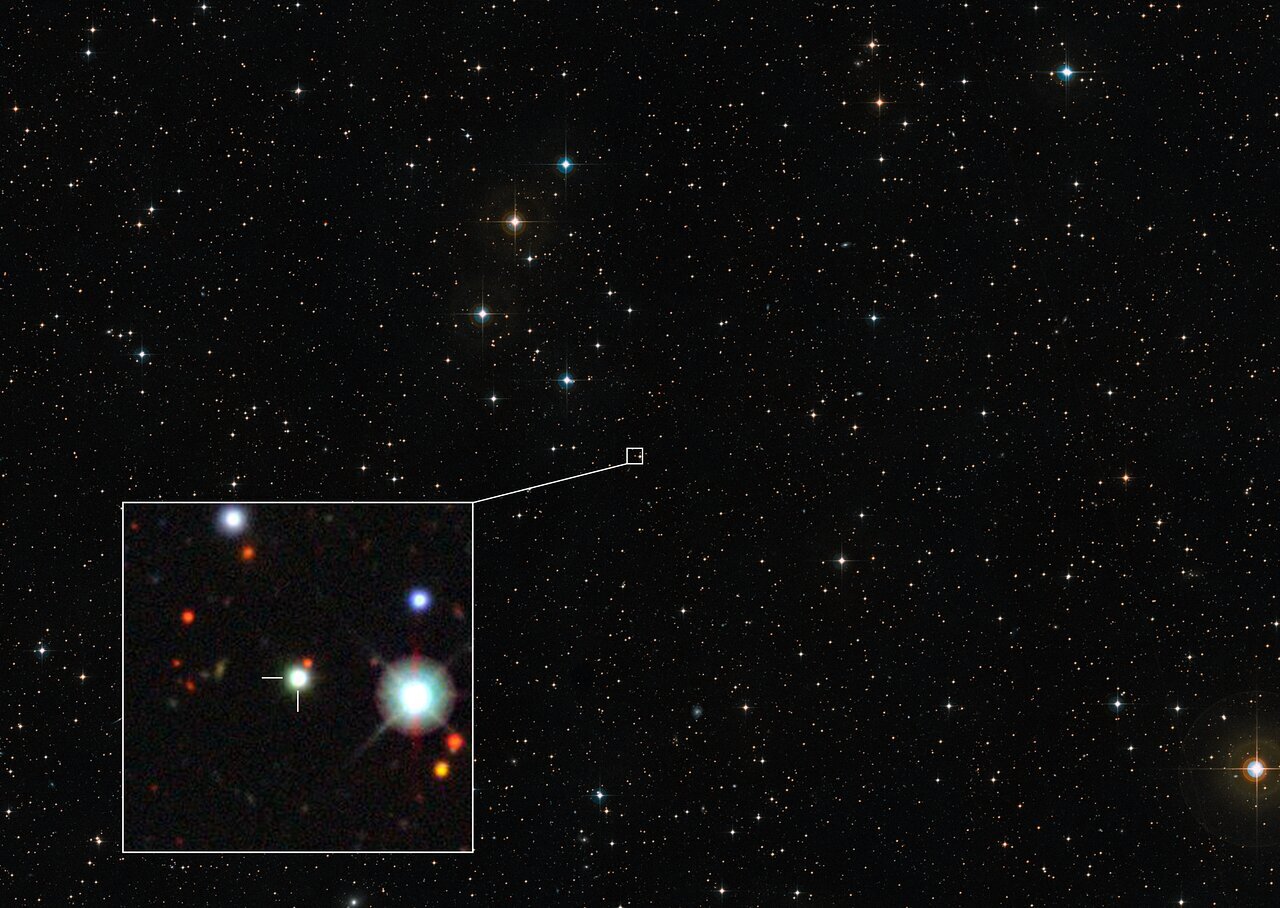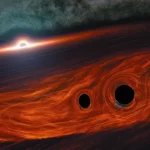Key Takeaways:
- Utilizing advanced telescopes, astronomers have identified the most luminous quasar ever observed, shedding light on the rapid growth of supermassive black holes.
- The record-breaking quasar, J0529-4351, exhibits extraordinary brightness, emitting over 500 trillion times more light than the sun due to its massive black hole and energetic accretion disk.
- Despite its remarkable luminosity, J0529-4351 remained unnoticed for decades, highlighting the challenges in distinguishing quasars from other celestial objects.
- Cutting-edge instruments like the X-shooter spectrograph on ESO’s VLT play a crucial role in uncovering the secrets of distant quasars and supermassive black holes.
- Studying these distant phenomena not only advances our understanding of the early universe but also fuels the curiosity and passion of astronomers like Christian Wolf, who revels in the thrill of scientific exploration
Utilizing the European Southern Observatory’s (ESO) Very Large Telescope (VLT), scientists have analyzed a brilliant quasar and determined it to be not only the most radiant of its category but also the most luminous entity ever witnessed. Quasars represent the luminous cores of galaxies situated far away, with supermassive black holes propelling them.
The black hole within this extraordinary quasar is increasing its mass at a rate equivalent to one solar mass per day, marking it as the most rapidly expanding black hole on record.
The black holes energizing quasars gather matter from their surroundings, emitting immense quantities of light in the process. Quasars, as a result, rank among the brightest entities observable in our sky, meaning even those situated at considerable distances remain visible from Earth. Typically, the most luminous quasars signify the presence of the fastest-growing supermassive black holes.
“We have identified the fastest-growing black hole known to us. With a mass equivalent to 17 billion suns, it consumes slightly more than one solar mass daily. This renders it the most luminous entity in the observable universe,” stated Christian Wolf, an astronomer at the Australian National University (ANU) and primary author of the study published in Nature Astronomy. The quasar, named J0529-4351, lies so remote from Earth that its light has taken over 12 billion years to reach us.
The matter drawn towards this black hole, forming a disk, emits such substantial energy that J0529-4351 shines over 500 trillion times brighter than the sun. “All of this luminosity emanates from a hot accretion disk measuring seven light-years across—likely the most extensive accretion disk in existence,” remarked Samuel Lai, an ANU Ph.D. student and co-author. Seven light-years equates to approximately 15,000 times the distance from the sun to Neptune’s orbit.
Interestingly, this groundbreaking quasar had remained unnoticed until now. “It is surprising that it evaded detection until today, given that we already know about a million less remarkable quasars. It has been in plain sight all along,” noted Christopher Onken, a co-author and astronomer at ANU. He added that this object had appeared in images from the ESO Schmidt Southern Sky Survey dating back to 1980, but its classification as a quasar came decades later.
Detecting quasars demands precise observational data covering vast regions of the sky. The resulting datasets are so extensive that researchers often resort to machine learning models to differentiate quasars from other celestial bodies.
However, these models rely on existing data, which confines potential candidates to objects resembling those already identified. If a new quasar proves more luminous than any previously observed, the program may dismiss it and instead categorize it as a star relatively close to Earth.
An automated analysis of data from the European Space Agency’s Gaia satellite initially misidentified J0529-4351 as too bright to be a quasar, suggesting it to be a star instead. It was only last year that researchers confirmed it as a distant quasar through observations from the ANU 2.3-meter telescope at the Siding Spring Observatory in Australia.
Nevertheless, identifying it as the most luminous quasar ever observed necessitated a larger telescope and more precise instrument measurements. The X-shooter spectrograph on ESO’s VLT in the Chilean Atacama Desert supplied crucial data.
The most rapidly expanding black hole ever observed will also serve as an ideal target for the GRAVITY+ upgrade on ESO’s VLT Interferometer (VLTI), designed to accurately measure the mass of black holes, including those distant from Earth. Furthermore, ESO’s Extremely Large Telescope (ELT), a 39-meter telescope currently under construction in the Chilean Atacama Desert, will enhance the identification and characterization of such elusive objects.

Exploring and examining distant supermassive black holes could provide insights into the mysteries of the early universe, including their formation and evolution alongside their host galaxies. However, Wolf’s quest extends beyond scientific curiosity. “Personally, I simply enjoy the pursuit,” he remarked. “For a few minutes each day, I get to experience the thrill of a treasure hunt, bringing to bear all that I have learned since.”


